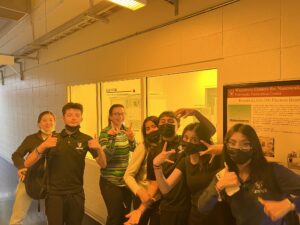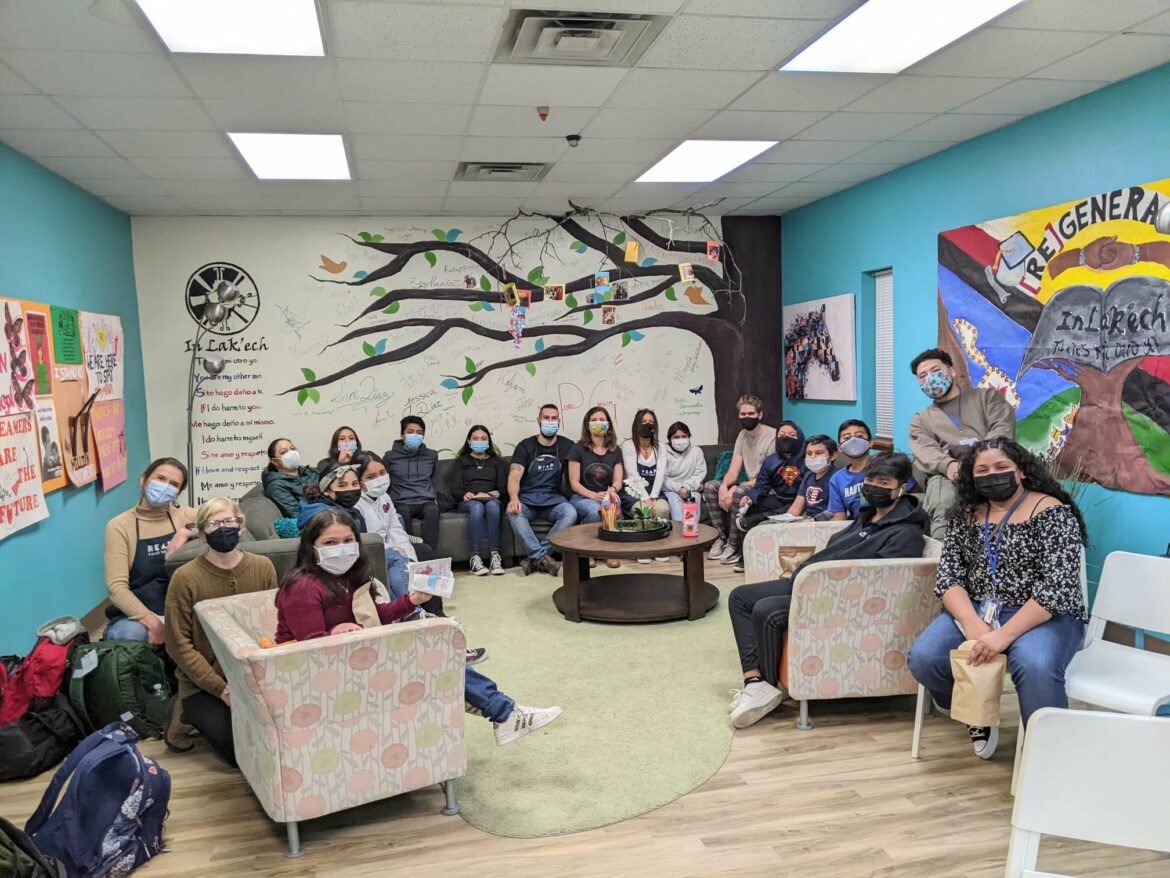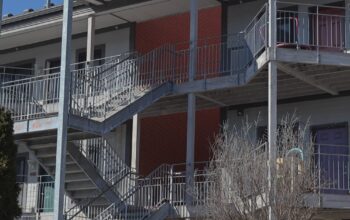As academic deficits persist, Centro Hispano of Dane County supports Latino and Hispanic students in partnership with the Madison school district through culturally relevant after-school programming
At Centro Hispano of Dane County, education is a family matter.
“Everybody who is a part of [a] family is impacted by the academic journey,” Centro Hispano’s Youth Programs Manager Maria Paula Lujum said.
Centro Hispano, a Madison-based nonprofit organization, engages Latino and Hispanic people through community-centric programs and services. One component central to this effort is its youth after-school programming in the Madison Metropolitan School District.
The organization’s Juventud and Escalera programs service approximately 250 Madison middle and high school students at seven schools across the district. Amid educational inequities, the curriculum emphasizes academic and professional support through family engagement, culture, identity and community, according to Lujum.
“The goal is to just walk alongside the students and their families,” Lujum said.

The problem
Latino and Hispanic community members make up the largest racial group after white people in Dane County and the school district, where they represent 23% of the student population.
Yet, these students continue to score lower than all other racial groups besides their Black and African American peers on state assessments, according to data from the Wisconsin Department of Public Instruction for the 2020-21 academic year — illustrating the effect systemic inequities have on academic success across racial groups.
For example, in English/language arts examinations, 52.1% of Hispanic and Latino students scored below the basic achievement marker, while just 12.5% of white students did.
Madeline Hafner, executive director of the Minority Student Achievement Network, a national consortium focused on eliminating the racial opportunity gap in school districts, highlighted the importance of the school district’s work in addressing these disparities in partnership with community organizations, such as Centro Hispano.
“School systems were developed for white people and by white people of a certain socioeconomic demographic,” Hafner said. “So, in order to create something that is successful for all of us, we need to have all of us at the table to design it.”
The tailored and culture-based approach
Juventud and Escalera youth coordinators hope to foster students’ voices, providing a safe space and sense of belonging through culturally relevant programming, guest speakers, workshops, career exploration and more.
“We are shedding the light of, ‘Hey, the students are here, and they have talent, and they have skills, and they have dreams, and they have projects, [and] they have a voice,’” said Lujum. “‘And we’re here.’”
After-school programming that targets academic support while also embracing students’ culture and affirming home identities creates an increased sense of belonging and learning, Hafner said.
“[It] is so important we see our local school as embedded within a community and not separate,” she said.
Laura Whitmore, community partnership coordinator for Madison public schools, reiterated this view, underscoring Superintendent Carlton Jenkins’ emphasis on the idea of “community in the schools [and] schools in the community.”
“It is a high priority to have community partnerships involved in our schools and vice versa,” Whitmore said, noting that Centro Hispano and the school district are a “natural pairing.”
The impact
For Paola Hernández, a 2019 graduate of West High School, the Escalera after-school program was a welcoming and engaging experience, leading her to seek subsequent leadership within Centro Hispano’s Avanzando program for college freshman and sophomores.
Community was vital to Escalera, Hernández said.
“All the programs were for our academic benefit and to help us succeed,” Hernández said. “[But] it was the same group of students and that created trust throughout our years in high school.”
Whitmore highlighted that, overall, Juventud and Escalera students feel “very” positive about the programs.
Centro Hispano’s youth programming is rooted in an asset-based approach, an educational philosophy that seeks to break from the traditional deficit models of academic achievement and focus on the strengths of students.
This approach views supposed deficits — such as language, socioeconomic status and immigration status — as valuable assets to the students’ learning.
An asset-based approach celebrates the diversity that students bring to the classroom setting and the community at large. At Centro Hispano, this is achieved through the creation of “safe spaces” in the culturally relevant programming for Latino and Hispanic students of all backgrounds, Lujum said.
Hafner emphasized the importance of these methods in informing schools’ curricula, stressing that more schools need to be guided by frameworks that support and foster this diversity in experience, like those employed by Centro Hispano.
“Schools need to design themselves differently moving forward, and some are doing that in small ways,” Hafner said.
The challenge
Still, challenges remain.
Since Centro Hispano’s programming is not in all middle and high schools, just 8% of all Latino and Hispanic students in the district are served, according to the organization’s 2021 strategic update.
Since Juventud and Escalera function after school, there is sometimes a disconnect with students not aware of the programs, Lujum and Whitnore said.
“Visibility is always something that we’re working towards,” Whitmore stated.
Lujum also noted that the COVID-19 pandemic has only made these challenges more apparent.
As educational inequities persist, community organizations, in partnership with the school districts, are often left to meet students where they are at, academically and personally, Hafner said, noting that this is rooted in issues with how public schools are funded at a local and national level.
“[Centro Hispano is] a part of the puzzle; they’re a piece,” Whitmore said.
To Hafner, holistic and community-based approaches, like Centro Hispano’s methods, in schools are critical to increase student academic success and achievement across racial and ethnic groups.
“Schools cannot be asked to do this in isolation of community membership,” Hafner said.
Looking to the future, Lujum hopes that the MMSD opens more spaces, such as listening sessions, that welcome Latino and Hispanic families’ perspectives,“[To] hear their voices, their opinions, and integrate them more into what is happening within the schools,” Lujum said, adding,“It’s important to take into consideration what students and family think — what they want — and co-partner with them.”
Ultimately, for Lujum, these tenets of family, community and belonging remain central to the mission of the Juventud and Escalera programs.
“We’re walking this journey together, and we’re going to do it together,” Lujum said.





